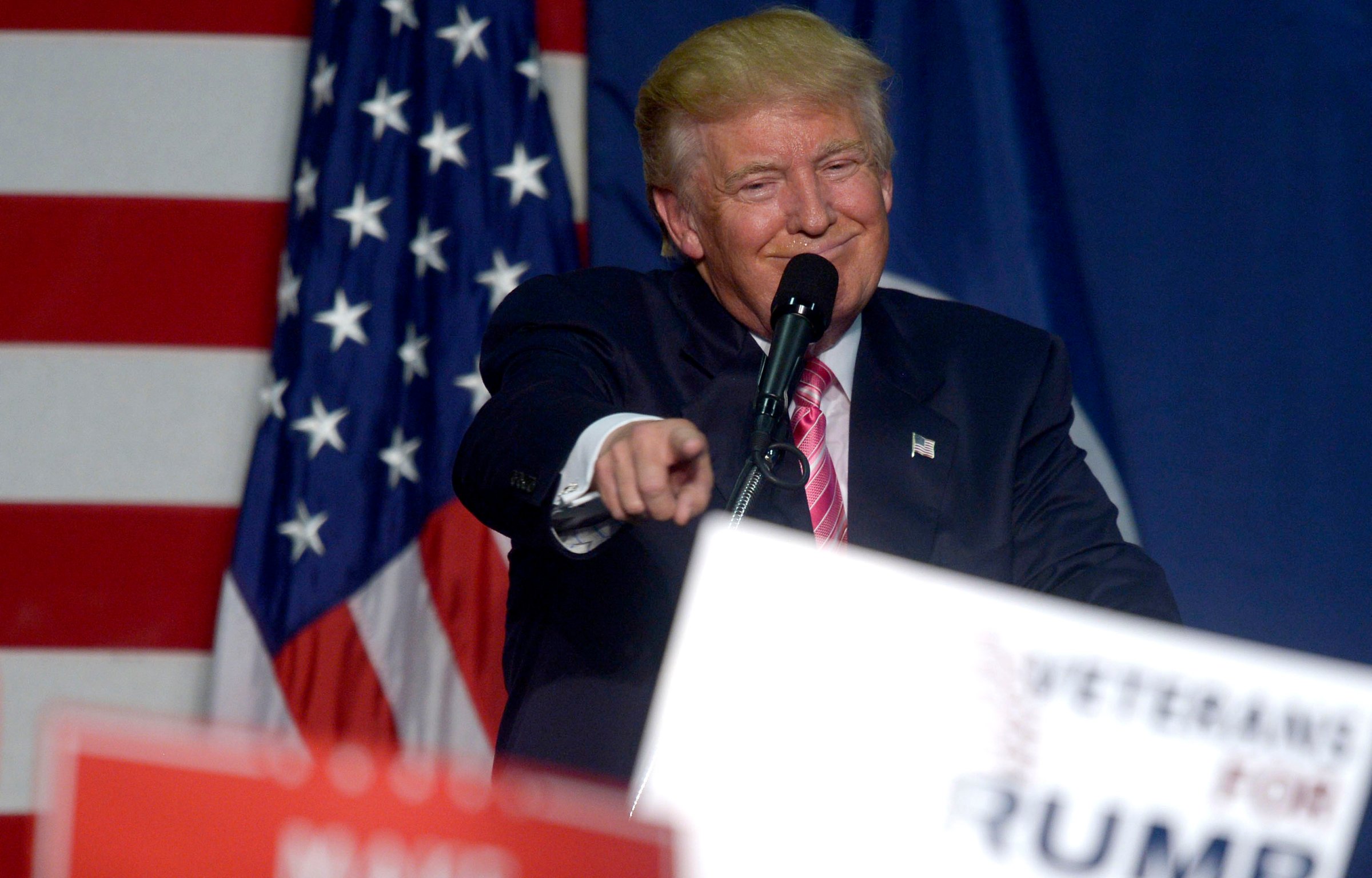
John Heubusch was the Executive Director and Jo Anne Barnhart was the Political Director of the National Republican Senate Committee during the 1996 election cycle.
In the weeks leading up to the Republican National Convention, the biggest Trump question was “has he reached his peak?” The expected post-convention bounce answered with a clear “No!” But the rising Trump trend has stalled after a series recent of Trump mis-steps—or more appropriately, mis-speaks. As the Trump trend turns downward, a new question arises: what is the Trump floor?
Political pundits ponder and argue about the length and depth of the Trump tailspin. Notable Republicans are seemingly trying to outdo each other with public statements and letters either opposing or distancing their campaigns from a Trump presidency. The pundit reaction is de rigueur; the Republican naysayers, damaging and dangerous. Here’s why.
When this election cycle began in 2014, gloom and doom best described the Republican chances of holding a Senate majority. The Republicans have more incumbents to defend (24) than Democrats (10), and Democrat incumbents are largely in “blue” states. The more races to defend, the greater the odds of losing more. The more candidates running in sympatico political landscapes, the greater the odds of winning more. It’s simple math. And no number is more important for keeping the Senate in Republican hands than the state-by-state Trump “floor.”
For proof, step back in time to 1996. The two of us worked at the National Republican Senate Committee (NRSC) under Chairman Al Damato (R-NY) in that election cycle and learned early on that nothing could be taken for granted.
Republican Senate chances were bright at the beginning of the election cycle. We started with a numbers disadvantage given Republicans had 19 seats to hold and Democrats had less with 15 seats at stake. Early in the election cycle, six Democrat Senators decided to retire, making the odds of Democrats taking over the Senate slim. However, as the election cycle unfolded, five Republicans decided to hang up their cleats as well. We had no doubt that with 11 open seats, the election cycle would be highly competitive, and we were in a real fight to hold the Senate majority. We examined the strength at the top of the ticket in every competitive state and knew from those numbers trouble was on the horizon.
The massive deficit for Senator Bob Dole in the Dole v. Clinton match-up in numerous states created a new math for us. The more Dole’s poll numbers dropped, the more pundits predicted a loss of Republican Senate seats. As great admirers of Senator Dole, we found it especially tough to see him behind during the presidential race. Even strong Republican Senate candidates faced incredible challenges fighting to rise enough above the Dole “floor” to win. A review of the final state-by-state tallies days before the election showed that when Dole was just five to six points behind Clinton in some states and 10 points behind Clinton in others, it was impossible to overcome the deficit at the top of the ticket even for the best candidates who ran smart campaigns.
Ultimately, the pundit’s predictions just before election day reflected a probable loss of Republican Senate seats. When it was all over, the House did indeed lose a dozen seats. But Republicans were victorious in the Senate in that they gained two seats. Senator Al D’Amato’s bold decision to borrow millions to target a handful of campaigns where the Dole floor was tolerable was a winning move. We also proved in a state or two that it was indeed possible for a talented candidate with a terrific campaign to overcome a presidential loss of major proportions unless, of course, an electoral tsunami took place.
The lesson for 2016: If the Trump floor continues to slide, the gloom and doom some are predicting will become a reality. As we write this, professional pollsters working for Senate and House campaigns are carefully watching the numbers at the top of the ticket. The head-to-head match-ups of Trump v Clinton in each state matter, and they matter a lot. What’s the magic number this election cycle that Trump must not go below to keep the Senate in Republican hands? Right now, the answer lies in the statewide polls of 34 states where the Senate seats are up for grabs.
This is no Trump endorsement. But a word to the wise for the anti-Trump cheerleaders: tread carefully. Your efforts to defeat Trump may just be handing the Senate majority to the Democrats.
More Must-Reads From TIME
- The 100 Most Influential People of 2024
- The Revolution of Yulia Navalnaya
- 6 Compliments That Land Every Time
- What's the Deal With the Bitcoin Halving?
- If You're Dating Right Now , You're Brave: Column
- The AI That Could Heal a Divided Internet
- Fallout Is a Brilliant Model for the Future of Video Game Adaptations
- Want Weekly Recs on What to Watch, Read, and More? Sign Up for Worth Your Time
Contact us at letters@time.com